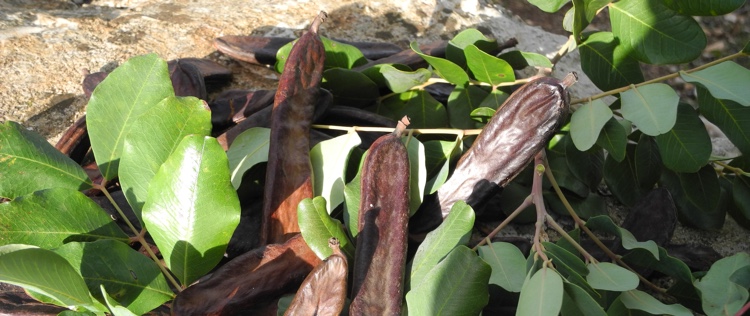Carobs


Walking through the land of the farm, among majestic olive trees meet other scattered monumental trees, with larger leaves, dark green and long green or brown pods. Even their trunk is twisted, sometimes it seems to be wrapped in organ pipes that silently sound the melody of nature. It is the carob tree, a typical tree of the Mediterranean, introduced in southern Italy by the Greeks or the Phoenicians and widespread in the Middle Ages by the Arabs.
Fruit rich and out of touch
We can consider the carob as long pods from 12 to 20 cm. They are a forgotten fruit but with great properties. It is rich in fiber, vitamins A, B2 and E, minerals such as calcium, potassium, copper and manganese. The high sugar content gives the carob pulp a sweetish taste, similar to cocoa. These fruits are gluten-free and have a low calorie content. Carobs are very good for diets thanks to these characteristics. Once they were easily available and could feed the poor, not just the animals. Today carob pulp flour is prized and is used in cooking as an alternative to cocoa to prepare cakes. Seed flour is used as a thickener (E410) in the food industry.
Curiosity
The seeds of the carob are very hard and weigh all exactly 0.20 grams. These seeds are called "qerat" in Arabic and in the past were used as a unit of measurement to weigh gold and precious stones. Qerat gave its name to what is now called "carat".




